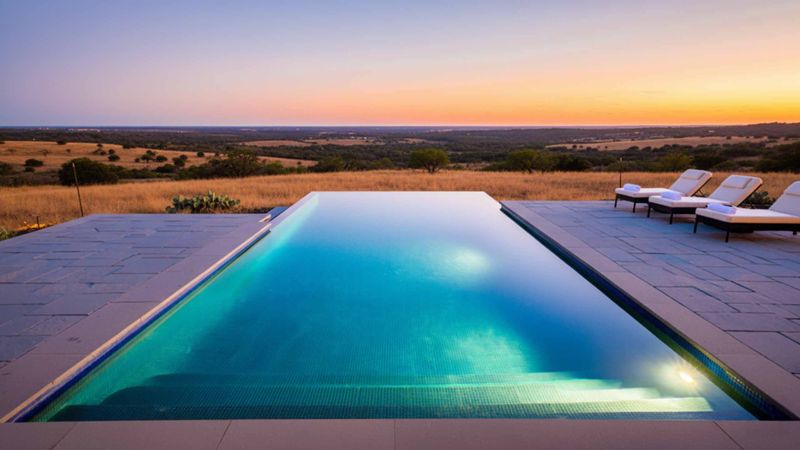I'll never forget the first time I saw a real infinity pool. Not in a magazine or on Instagram—but standing at the edge of one in Santorini while the Mediterranean stretched endlessly before me. The water just... disappeared. It felt like swimming at the edge of the world.
Here's what most people don't realize about infinity pools: they're basically gravity-defying water sculptures that'll cost you about as much as a nice Tesla. These engineering marvels trick your brain into thinking water flows straight into the horizon—and homeowners happily fork over way more than they'd spend on a regular pool because the payoff is mind-blowing.
The payoff isn't just Instagram bragging rights (though those definitely don't hurt). It's waking up every morning to your own private slice of paradise that makes your neighbors seriously question their life choices.
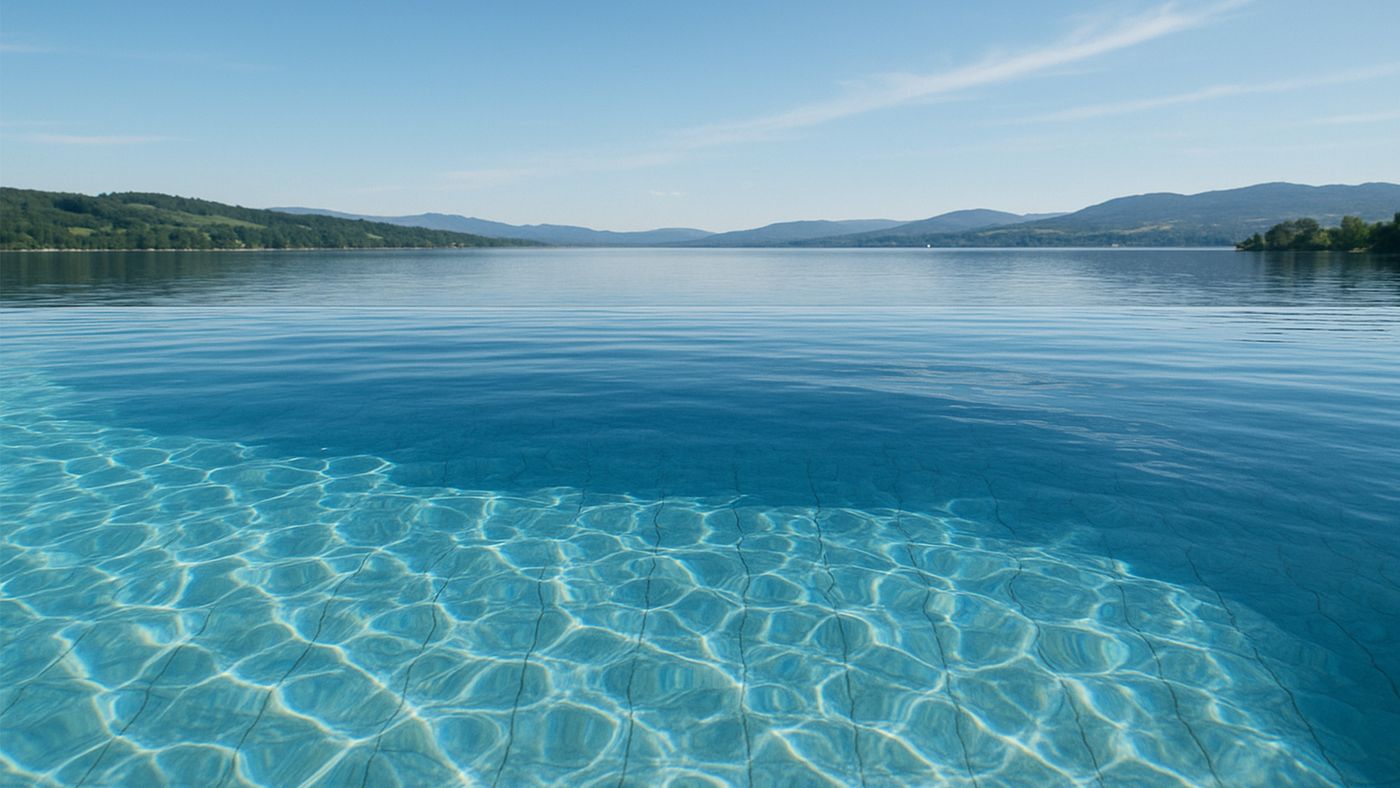
The Science Behind That Vanishing Edge
Let me blow your mind real quick. An infinity pool doesn't actually spill water into oblivion—though it sure looks that way. The whole thing runs on a clever hydraulic con game where water pours over a knife-sharp edge into a secret catch basin you can't see from your lounge chair. Then pumps shoot that water right back into the pool faster than you can say "optical illusion."
Think of it like a magic trick that never gets old. The vanishing edge works because engineers hide that catch basin at exactly the right angle. When you're chilling in the pool or admiring it from your deck? All you see is water meeting sky. No walls. No boundaries. Just an endless liquid horizon that makes your brain do a double-take every single time.
Traditional pools work like bathtubs with fancy filters—water gets sucked through little holes in the walls and pumped back through jets. Infinity pools flip that whole system on its head. Water constantly overflows into hidden gutters around the edges. The entire vanishing edge becomes one massive skimmer that grabs every leaf and bug before they even know what hit them.
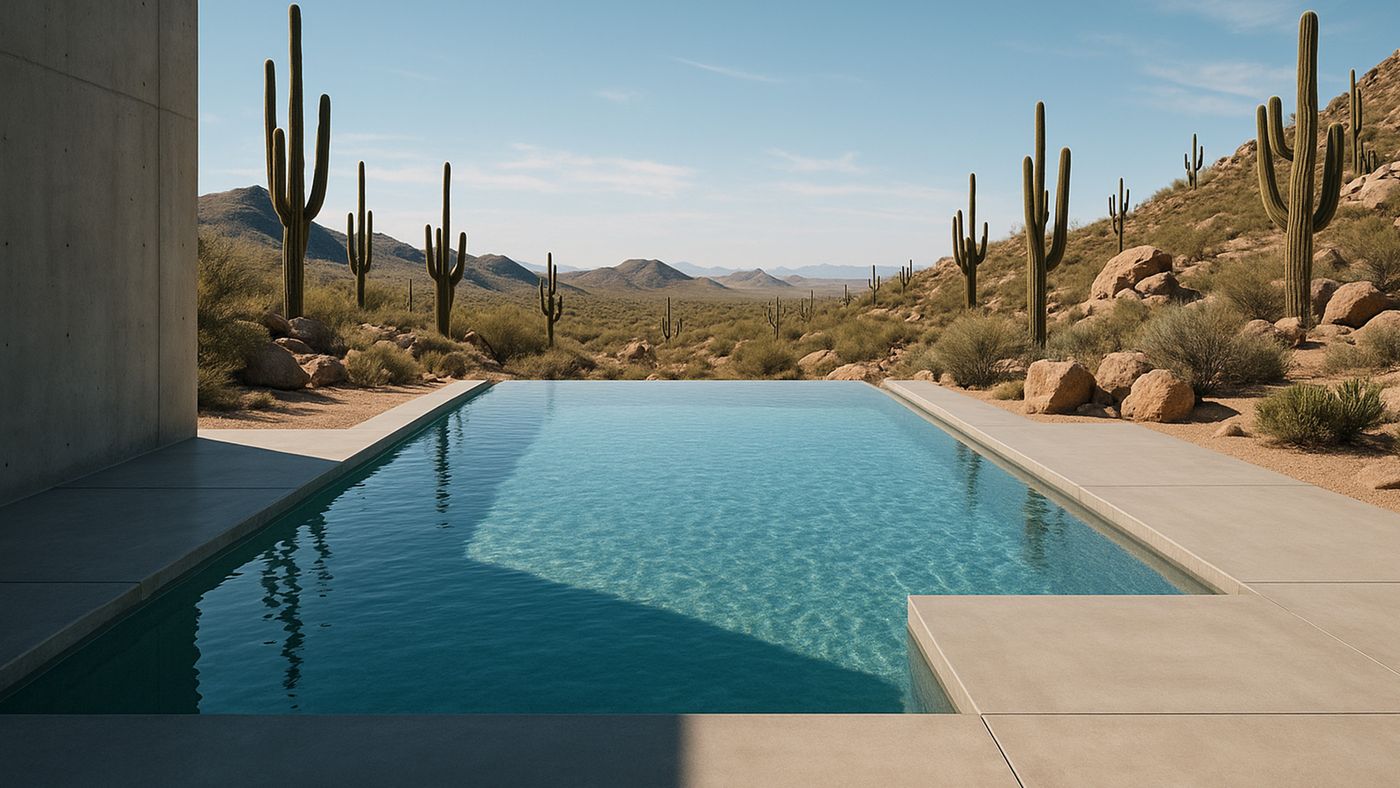
The Engineering Magic
Creating that perfect vanishing edge requires precision that would make a Swiss watchmaker jealous. We're talking tolerances so tight that one tiny bump or dip turns your beautiful waterfall into an uneven mess that looks like someone forgot to turn off a faucet.
Those surge tanks hiding below aren't just random holes in the ground. Engineers calculate them to handle everything from cannonball contests to wind storms that try to push half your pool over the edge. The plumbing system looks like something from a sci-fi movie—dedicated pumps for circulation, separate ones just for the edge effect, and computer brains that constantly adjust flow rates like cruise control for your waterfall.
Here's where it gets really nerdy: water level control drives pool builders absolutely bonkers. You can't just stick a garden hose in there and call it a day. Modern setups use sensors that would make NASA proud, reading conditions and adjusting flow automatically whether it's dead calm or blowing like crazy outside.
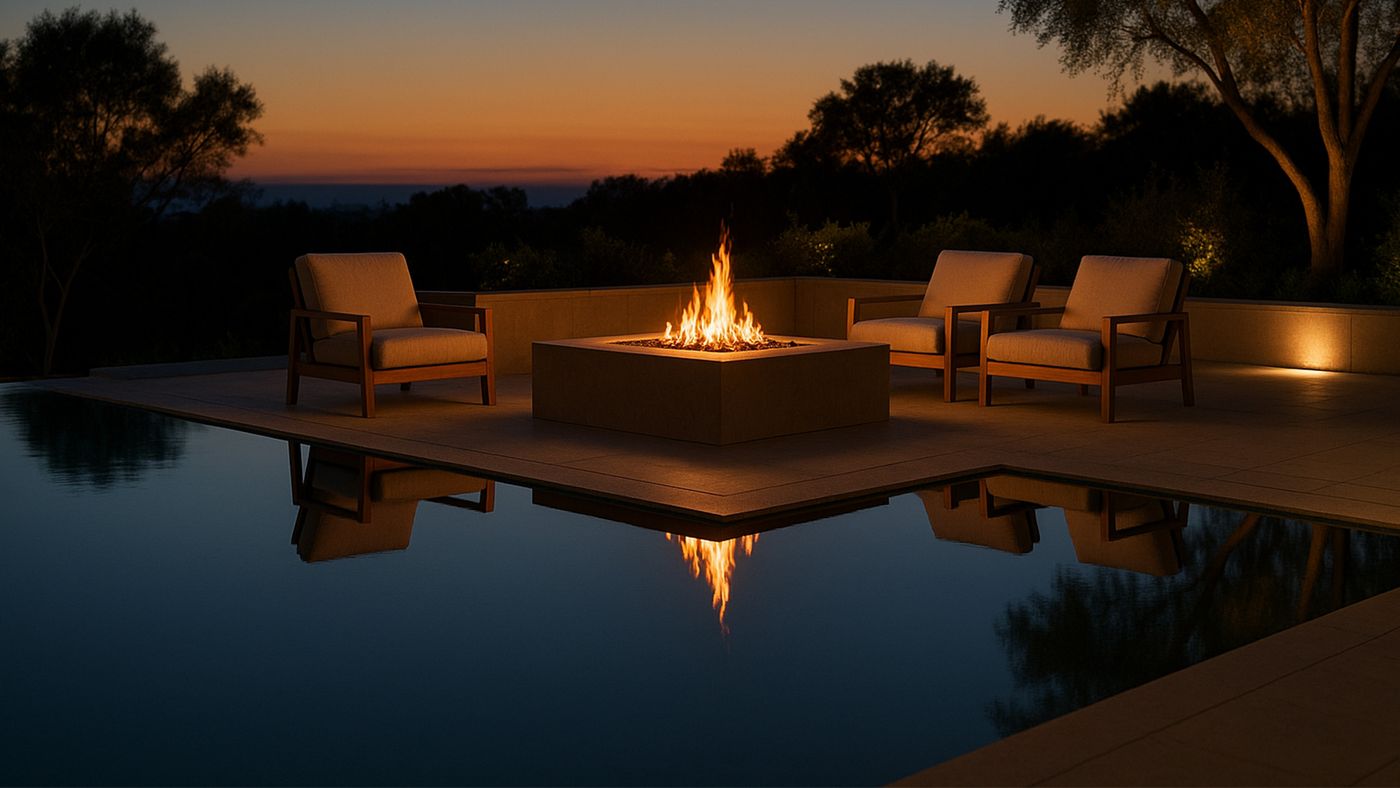
Types and Sizes That Actually Make Sense
Not all infinity pools are created equal. Some whisper elegance while others scream "look at my money!" Each style brings its own brand of magic—and its own price tag.
Single-edge infinity pools dominate the residential scene for good reason. Water cascades over one or two edges while the rest stays normal. Perfect for that hillside lot with killer views and way more affordable than the full perimeter deal. You pick the edge that faces your best view—ocean sunsets or mountain peaks or whatever makes your heart sing.
Perimeter overflow pools are the Rolls-Royce of the infinity world. Water spills on all four sides, turning your pool into a giant mirror floating at deck level. The engineering complexity makes rocket science look simple, but holy smokes does it look incredible. Your pool literally melts into the landscape like it was always meant to be there.
Knife edge pools make architecture nerds lose their minds. These babies have edges so thin they practically disappear. Water hits deck level and vanishes into slots narrower than your phone. The pool looks like it's floating in space. The engineering tolerance? Tighter than your budget after you see the final bill.

Size Sweet Spots
Pool dimensions affect way more than just how many people you can invite to your pool party. There's a sweet spot for every property, and going bigger isn't always better (for your wallet or your sanity).
Got a smaller lot? You're looking at something like a generous hot tub that thinks it's a pool. Single-edge designs work best here since they pack maximum drama into minimum space. The infinity illusion still works beautifully if you plan it right.
Medium-sized properties open up the fun zone. Now you can play with dual edges if you're feeling fancy. Room for a spa that spills into the main pool? Check. Space for landscaping that doesn't look like an afterthought? Double check.
Got a massive lot? Sky's the limit, buddy. We're talking pools so big you might need a kayak to cross them. Multiple tiers with water cascading everywhere. Swim-up bars. Fire features. Basically Disneyland in your backyard with a price tag to match.

The Real Cost (Brace Yourself)
Let's rip the band-aid off. Infinity pools cost serious money. But understanding where every dollar goes helps soften the blow—or at least prepares you for the financial reality check.
Most homeowners end up spending what feels like a small mortgage on these things. We're talking anywhere from the price of a luxury car to the down payment on a house, depending on how crazy you want to go. Basic installations start in Honda Civic territory but can easily climb to Ferrari levels if you want all the bells and whistles.
Here's the brutal truth: the infinity premium adds a massive chunk over a regular pool. That's the cost of all that complex engineering, specialized contractors who charge like brain surgeons, extra equipment nobody tells you about upfront, and those precision requirements that make everyone involved slightly insane.
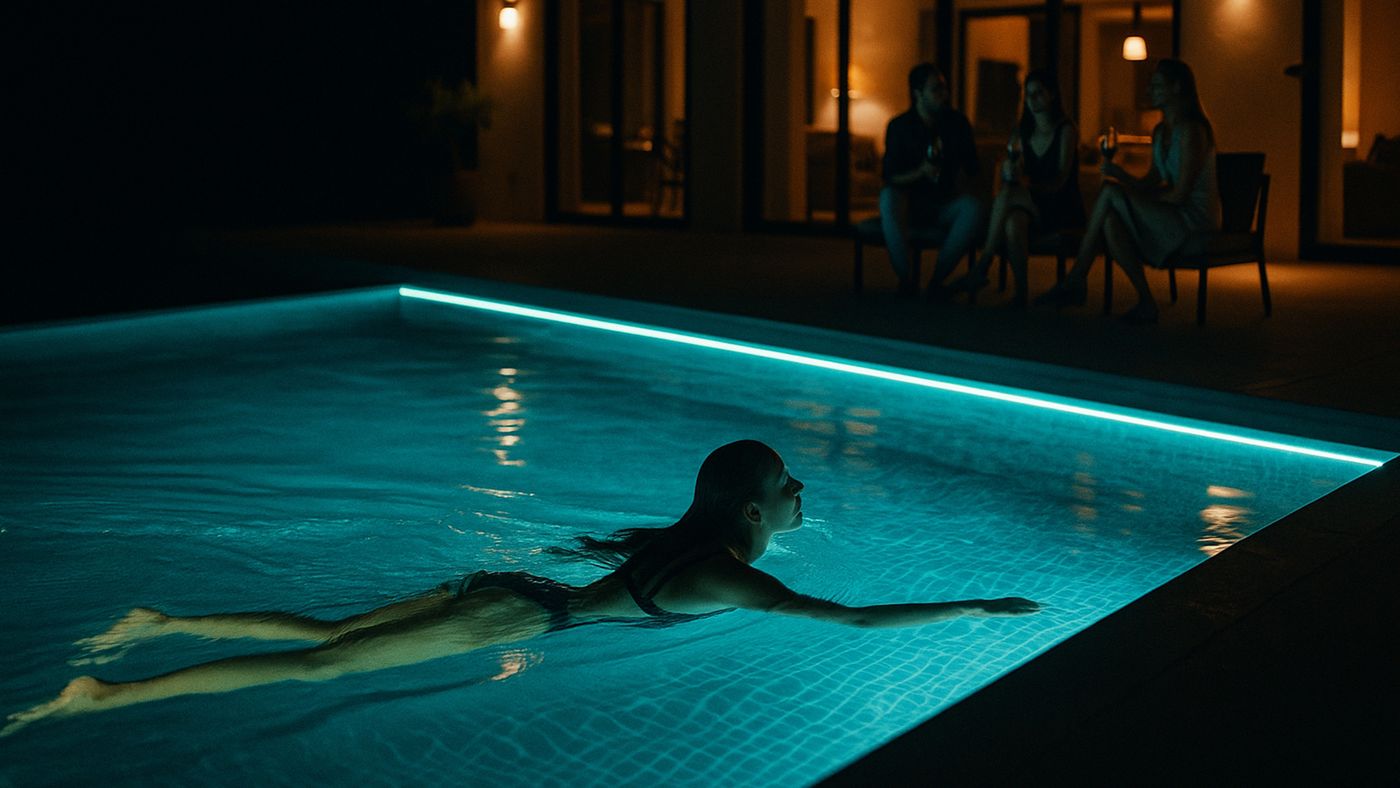
Hidden Costs Nobody Mentions
Site prep can blindside you. Soil tests might reveal surprises nobody wanted—like hitting rock or discovering your backyard sits on what used to be a swamp. One homeowner I know discovered ledge rock and watched their budget explode faster than a cheap firework.
Geography plays a bigger role than you'd think. California and the Northeast laugh at national averages. The Midwest? You might catch a break if you're lucky and know the right people.
Then there are the ongoing costs that never stop. These pools are thirsty—pumps run constantly for the edge effect, evaporation laughs at your water bill, and chemicals disappear faster than David Copperfield's tricks. Energy consumption makes your meter spin like a DJ's turntable.

What to Look For (And What to Avoid)
Success starts with picking the right spot and the right team. Mess this up and you'll have a six-figure mistake staring at you every morning, judging your life choices.
Your site needs the right bones. Natural slopes make single-edge infinity pools sing. Elevated spots maximize that horizon-melting effect. Stable soil keeps things from shifting around like a house of cards. And here's something people forget—can a concrete truck actually reach your backyard? Better figure that out now rather than later.
View optimization requires some serious strategy. You want to line up that vanishing edge with whatever makes your jaw drop—ocean waves, mountain ridges, city lights, whatever floats your boat. Just remember that seasons change views, so think year-round.
Contractor Red Flags
Run like hell from general contractors claiming they "can figure it out." This isn't a deck or a fence we're talking about. Bids that seem too good to be true? They are. No infinity pool experience means you're their expensive guinea pig. Zero local references? Ghost them before they ghost you.
Look for contractors who actually know what they're doing. Industry certifications mean they've at least pretended to study this stuff. Their portfolio better show infinity pools that don't look like someone's backyard science experiment gone wrong. Insurance and bonding matter because when things go sideways (and they sometimes do), you want protection.
Common Mistakes That Hurt
Engineering screw-ups create expensive nightmares. Undersized catch basins can't handle wind-blown water, which means flooding. Your nice deck furniture? Soaked. Your patience? Gone. Your bank account? Lighter.
Water level disasters happen when auto-fill systems get installed in the wrong spots. Main pool installation instead of the catch basin creates a choose-your-own-adventure between floods and dry pumps. Neither ending is happy.
Construction quality separates the pros from the pretenders. Vanishing edges need tolerances so tight they hurt to think about. Miss the mark and your waterfall looks drunk. Use the wrong materials and everything falls apart faster than a cheap umbrella in a hurricane.
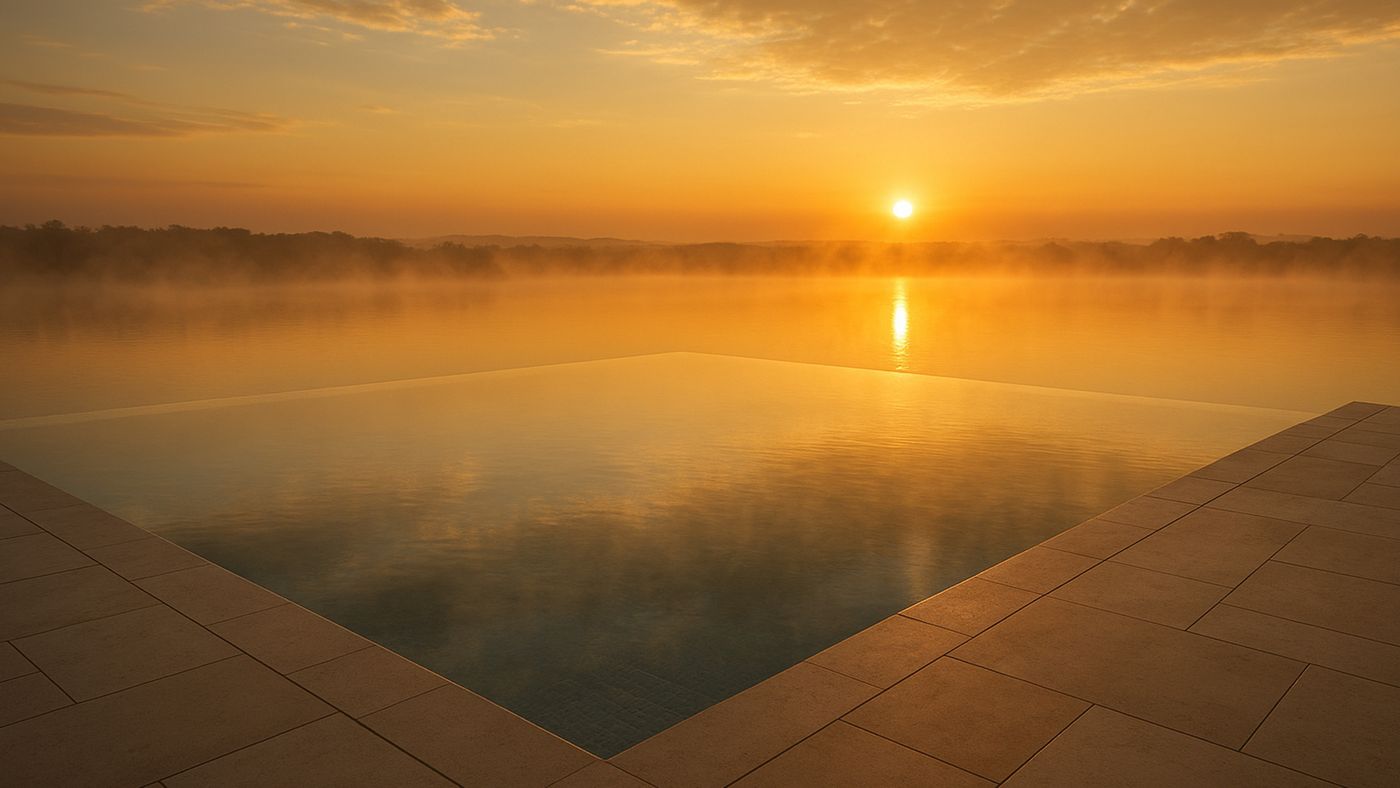
Maintenance Reality Check
Infinity pool maintenance plays by different rules. Master them or watch your investment turn into an expensive swamp that makes your neighbors laugh instead of weep with envy.
Water management becomes your new hobby whether you want it or not. Chemistry tests happen way more often than regular pools—no exceptions. Water levels need constant babysitting or the whole effect dies. Evaporation runs wild because edges can't stop flowing. More water additions mean more chemical adjustments. It never ends.
Catch basins add complexity regular pools don't have. Debris collects there like it's hosting a convention. Skip cleaning and circulation chokes. Water levels in the basin control everything. The dual filtration setup means twice the filter cleaning fun.
Equipment demands attention like a needy pet. Multiple pumps all wanting different things. Flow rates need monitoring or edges look pathetic. Energy usage makes accountants weep. Variable speed pumps require calibration by people who actually understand them.
Professional vs DIY Reality
Professional maintenance often makes way more sense than DIY disasters. Monthly service costs more than regular pools but starts looking smart real fast when you realize what's involved. These aren't "skim some leaves and add chlorine" situations.
Professionals prevent problems you didn't even know existed. DIY works fine for basic skimming and simple testing. But complex diagnostics? Leave those to people with proper tools and knowledge who won't accidentally break your expensive toy.
Seasonal maintenance gets especially interesting in cold climates. Winterization means draining everything completely. Every pipe needs attention or freeze damage awaits. Spring opening involves systematic testing of everything. Water chemistry starts from scratch like you're filling a brand new pool.
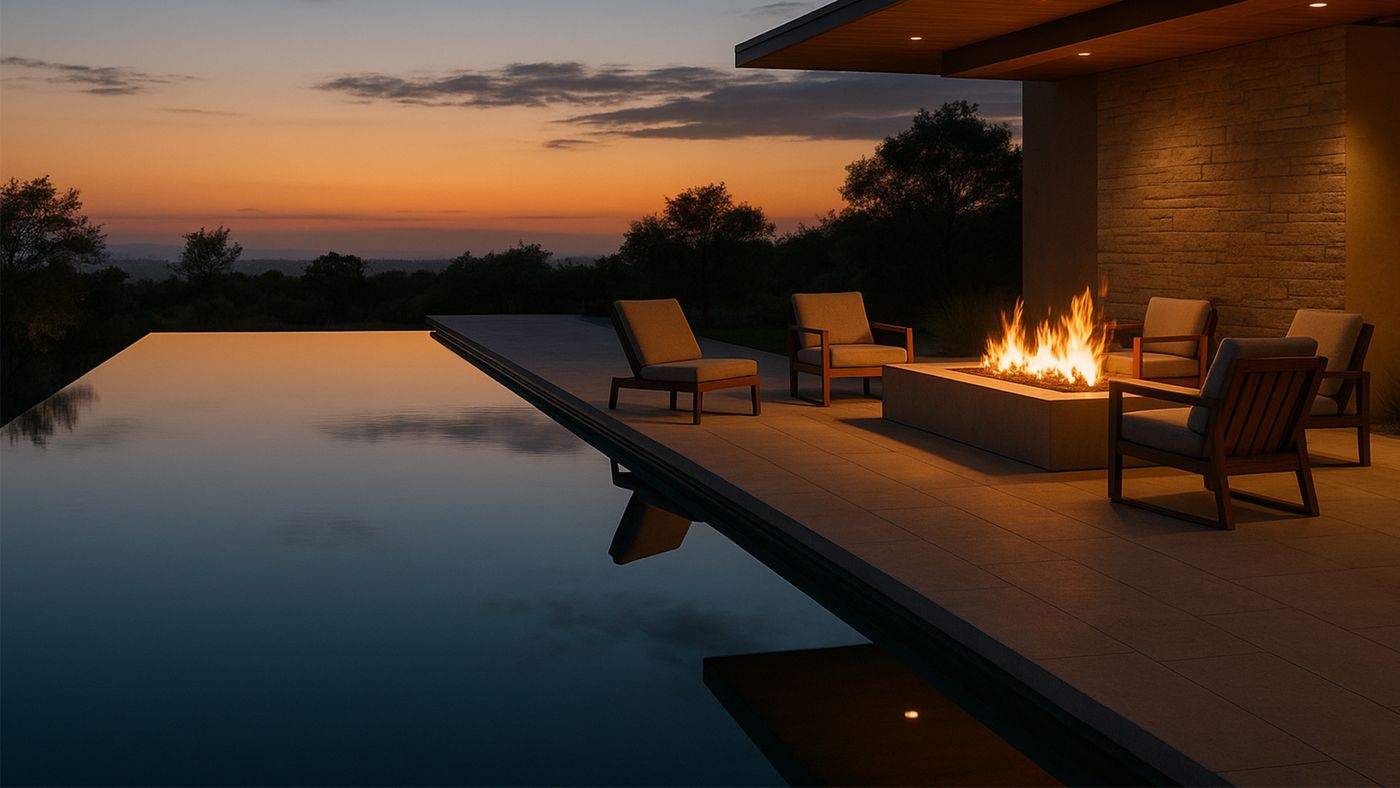
Is an Infinity Pool Right for You?
Let's get real about what infinity pool ownership actually means. The good stuff and the stuff that makes you question your sanity at 2 AM when the pumps are running.
You're Probably a Good Fit If:
- Your yard has natural slopes or elevated views (flat lots get expensive fast)
- You want to chill and entertain, not train for the Olympics
- You can handle higher maintenance without having a mental breakdown
- You've got a solid budget and aren't stretching to make it work
- You care about property value and creating something special
- You don't mind being the neighborhood's unofficial pool party host
Maybe Think Twice If:
- Your lot is completely flat (engineering costs go bonkers)
- You live where it's cold most of the year (seasonal shutdown gets old)
- You're expecting this to pay for itself (pools rarely do)
- You want to DIY everything (this requires real professionals)
- You regularly host massive parties (regular pools work better for crowds)
- You're already stressed about money (ongoing costs add up)
So is an infinity edge pool right for you?

The Brutal Truth
The advantages hit different when you experience them. Resort atmosphere in your backyard changes everything. Your place becomes the spot everyone wants to hang out. Photos look professional without trying. The horizon connection does something to your brain that's hard to explain but totally worth it.
Entertainment value pays dividends forever. Every gathering centers around your pool now. Kids and adults alike lose their minds over the vanishing edge effect. Your backyard becomes the neighborhood's favorite destination without you even trying.
But the disadvantages hurt more than salespeople admit. Installation costs will make you reconsider your life choices. Operating costs stay higher forever—energy bills, chemicals, professional maintenance. It all adds up faster than you'd think.
Complexity creates headaches you never saw coming. More pumps mean more things that can break. Specialized knowledge requirements eliminate most DIY fixes. Pool covers don't work with continuous edges, so heating costs spike. Some locations simply won't work no matter how much money you throw at the problem.
Quick Reality Check
How much more than regular pools? Plan on spending significantly more upfront and forever after. That engineering complexity doesn't come cheap.
Can you build on flat ground? Sure, but your wallet won't thank you. Zero-edge designs work but require serious engineering creativity.
How often will maintenance drive you crazy? Probably weekly at first, then you'll either adjust or hire someone. Professional service starts looking really smart when you realize what's involved.
What about safety with kids? The edge creates an illusion, not a cliff. Water flows into hidden basins, not into oblivion. Standard safety features still apply—fences, gates, covers, common sense.
The Modern Advantage
Technology has made these pools way smarter than they used to be. Smart systems let you control everything from your phone—heating, lighting, flow rates, chemistry. Variable speed pumps cut energy use dramatically while maintaining perfect effects. Automated chemical systems work like magic.
Energy efficiency keeps getting better. LED lights use way less power while looking incredible. Heat pumps warm water without destroying your budget. Solar integration makes sense almost everywhere now. Modern systems even predict problems before they happen—like having a pool expert living in your phone.
Bottom Line
Infinity pools aren't just swimming pools—they're lifestyle investments that happen to hold water. You're getting a legit backyard transformation that creates genuine wow moments every single day.
The trend isn't slowing down. As people crave resort-style experiences at home and yards keep getting more precious, infinity pools make more sense. They're not a compromise—they're a smart choice for the right property and budget.
Here's the thing: when you're floating in your own piece of paradise while that horizon melts away, you won't think about the extra money. You'll just think about how freaking cool this is and wonder why you waited so long.
This isn't a pool for everyone. But if you've got the right site, the right budget, and realistic expectations about what you're signing up for? Welcome to swimming at the edge of the world. The water's perfect, the view never gets old, and your friends will never stop being jealous.
Your resident pool aficionado.
For over 5+ years, The Pool Nerd has been a leading source in the swimming pool industry. With years of experince owning a swimming pool, our hope here is to guide and help making owning a swimming pool easier.
